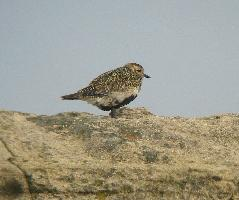
Weights and measures
| Length | from 28 to 31 cm |
|---|---|
| Weight | from 130 to 330 g |
| Wingspan | from 82 to 87 cm |
Animal description
The Northern lapwing (Vanellus vanellus), also known as the peewit in imitation of its distinctive calls, is a bird that belongs to the lapwing family. This species is notable for its striking appearance and fascinating behavior, making it a subject of interest among birdwatchers and naturalists. The Northern lapwing is widely distributed across temperate Eurasia, ranging from the United Kingdom and Ireland to the eastern reaches of Russia. It is a migratory bird, with many northern populations moving southwards to winter in more temperate regions closer to the Mediterranean Sea, North Africa, and parts of southern Asia.Adult Northern lapwings are medium-sized birds with a distinctive silhouette, characterized by a prominent crest on the head that can be up to 7 cm long. They have a wingspan of approximately 70-80 cm and weigh between 150 to 300 grams. The plumage is a captivating mix of colors and patterns. The back and wings are a glossy iridescent green, while the underparts are predominantly white. The breast is marked by a black patch, which is more pronounced in males. The face is white with a black mask, and the eyes are ringed with a yellowish border, giving them a striking appearance. The legs are long and pink, enabling them to wade through wetlands in search of food, and the bill is strong and slightly upturned at the end.
One of the most remarkable features of the Northern lapwing is its flight. The bird's wings are broad and rounded, allowing for an array of aerial maneuvers. In flight, their wingbeats are slow and deliberate, with occasional rapid flutters that make their iridescent plumage shimmer in the sunlight. During the breeding season, males perform spectacular aerial displays to attract females, involving high climbs, dives, and intricate patterns of flight, accompanied by their loud, piercing "peewit" calls.
The Northern lapwing inhabits a variety of open landscapes, including farmlands, wetlands, and grasslands. It is a ground-nesting bird, with nests being simple scrapes in the ground concealed among vegetation. The species is highly territorial during the breeding season, with males vigorously defending their nesting sites from intruders. The diet of the Northern lapwing primarily consists of insects, worms, and other invertebrates, which they forage from the ground with their sensitive bills.
Despite its beauty and fascinating behaviors, the Northern lapwing faces several threats, including habitat loss due to agricultural intensification and land-use changes, pesticide use, and climate change. These factors have led to declines in their population across parts of their range, prompting conservation efforts to protect and restore their habitats.
In conclusion, the Northern lapwing (Vanellus vanellus) is a bird of captivating beauty and intriguing behavior. Its iridescent plumage, distinctive crest, and acrobatic flight make it a joy to observe in the wild. However, the challenges it faces underscore the importance of conservation efforts to ensure that future generations can continue to marvel at this remarkable species.
Similar Animals
New photos of animals
Top 10 animals
- Dolphin gull (Leucophaeus scoresbii)
- Japanese macaque (Macaca fuscata)
- Stone loach (Barbatula barbatula)
- Greek tortoise (Testudo graeca)
- Diana monkey (Cercopithecus diana)
- Russian tortoise (Testudo horsfieldii)
- Galápagos tortoise (Geochelone nigra complex)
- Moustached guenon (Cercopithecus cephus)
- Galápagos penguin (Spheniscus mendiculus)
- Common flying dragon (Draco volans)


